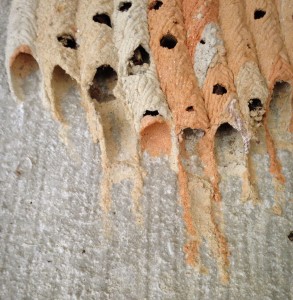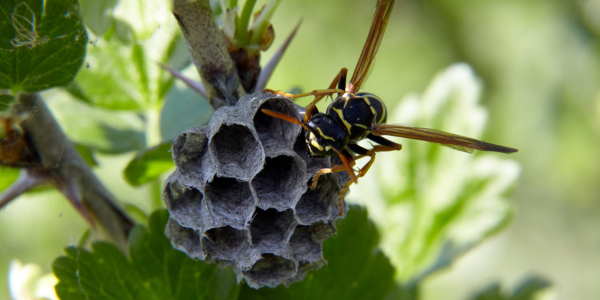Bee, Wasp and Yellow Jacket Infestations Put a Sting in Your Summer
Bees, wasps and yellow jackets can put a sting in your summer. Warm weather, abundant flowers, picnics and outdoor activities make it high season for these pests. Beyond their sting, these pests can damage your property.
New York, Long Island, Westchester and Rockland County Wasp and Bee Species
 Over 4,000 species of bees and wasps make their homes in the United States. Those most common to New York and Long Island include:
Over 4,000 species of bees and wasps make their homes in the United States. Those most common to New York and Long Island include:
- Yellow Jackets: Measuring about a half inch in length, yellow jackets have a distinctive shiny yellow and black body and visible stinger. These aggressive pests pack a vicious punch and can sting repeatedly, so watch out. Because they are attracted to meat and sweet smells, they are a common unwelcome guest at picnics and cook outs.
- Hornets: These large stinging insects can reach an inch and a half in length and are known to attack perceived threats in swarms of hundreds of individuals, each capable of multiple stings. Varieties most common to Long Island, Westchester, Rockland County and New York City are deep yellow and black with thing long wings.
- Paper Wasps: They can be black, brown, even reddish—in fact there are 250 varieties in the United States. These wasps will aggressively protect their nesting site with extremely painful stings.
- Mud Daubers: These inch-long wasps have slender shiny black bodies with blue or yellow markings. They are generally not aggressive, but their nests can be an unsightly nuisance.
- Honey Bees: They’ve got a sweet name, but, get on the wrong side of them and you are in trouble. Honey bees are a little less than a half inch in length and have fuzzy dark yellow and black striped bodies.
- Bumble Bees: These large bees range from ¾ of an inch to an inch and a half in size and have a fuzzy pale yellow and black abdomen.
- Carpenter Bees: They look like bumble bees but a little less fuzzy. They can wreak havoc to any wood structure.
Problem Bees, Wasps and Yellow Jackets
While bees and wasps are often spoken of in the same breath, different species present different problems
Some, like bumble bees, become pests only when they perceive a threat. Others, such as yellow jackets, can nest under siding, in air conditioners, under roof soffits and trim and other places where they can cause structural or cosmetic damage. Large nests under roofs and within walls can cause leaks that lead to water damage and create opportunities for other pests to enter. Paper wasps and carpenter bees cause damage because they chew wood for their nests. Nectar stored in hives and nests can melt and rot, causing staining and a foul odor.
Stings are more than a nuisance. Nests near places where children play or where pets frequent can be a real danger. Large nests can break through into building interiors, creating a hazard to those inside. A number of wasp and bee species will swarm attack in masses of hundreds of individuals. Both bee and wasp venom can cause severe, even lethal, allergic reactions.
How to Get Rid of Bees, Yellow Jackets and Wasps
You can find dozens of do-it-yourself ideas on the Internet, but you may want to think twice about removing a bee or wasp nest or trying to handle a yellow jacket infestation yourself.
Unless you know the exact species you are dealing with and how to treat the problem, you may be putting yourself and family in danger. It is important to know the extent of your problem. Consider that yellow jacket nests can contain 5,000 to 50,000 individuals. Many wasps and bees are extremely aggressive and they can stay agitated for days, putting unsuspecting passersby at risk.
And you may not solve your problem at all. Treating an active nest during the day will kill just a fraction of the hive members. You need to know the species’ specific foraging and nesting habits to target the right treatment at the right time of day or year. Getting treatments into the nest is also a challenge if you don’t understand each kind of nest structure or if you lack the right specialized equipment. Some species require multi-step treatments to ensure the infestation is truly gone. You don’t want the colony to merely relocate or return next season.


